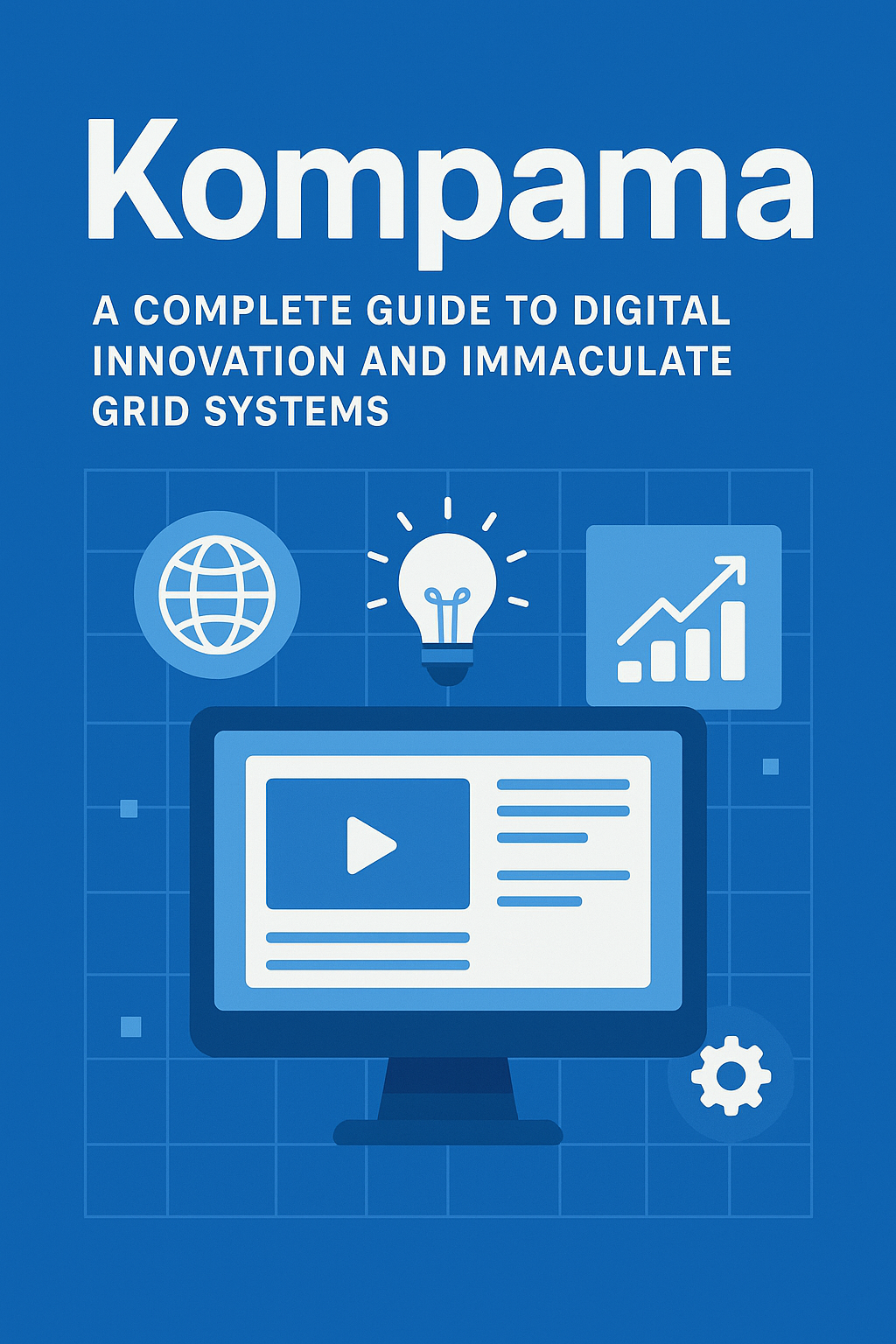In today’s fast-evolving digital landscape, innovation depends on how efficiently data, connectivity, and systems can be integrated. One of the emerging terms gaining attention in this space is Kompama. Much more than just a concept, Kompama reflects a new way of thinking about immaculate grid structures, digital communication, and interconnected platforms that redefine how individuals, businesses, and technologies interact.
This article dives deep into what Kompama is, its relevance in modern times, and how it plays a role in reshaping the future of digital ecosystems.
What is Kompama?
At its core, Kompama is understood as a digital framework designed to enhance grid-based systems and improve connectivity in innovative ways. The term has been associated with immaculate grid models that streamline information flow and optimize the way platforms communicate.
Kompama is not just about technology—it represents a philosophy of seamless integration, where systems are designed to be error-free, intuitive, and adaptive. By using this approach, organizations and individuals can achieve higher efficiency in data management, networking, and user interaction.
The Connection Between Kompama and Immaculate Grids
The immaculate grid has become a buzzword in digital spaces, often linked to gaming, sports analytics, and data visualization. However, its broader applications extend into network design, AI-driven platforms, and smart infrastructure.
Here’s how Kompama aligns with the immaculate grid concept:
-
Precision: Just like immaculate grids leave no gaps, Kompama emphasizes accuracy in digital interactions.
-
Scalability: Both concepts focus on expanding without losing structure.
-
Clarity: By reducing noise and redundancy, Kompama ensures smooth data navigation across digital environments.
This alignment makes Kompama a critical enabler of future-ready platforms that rely on grid-like architectures.
Why Kompama Matters in the Digital Age
The digital world faces challenges like data overload, security gaps, and inefficient system design. Kompama addresses these challenges by offering a blueprint that prioritizes connectivity, organization, and error-free performance.
Key reasons why Kompama is important:
-
Enhanced Connectivity
Kompama ensures that networks, apps, and devices interact seamlessly, minimizing disruptions and maximizing efficiency. -
Improved Data Handling
In a data-driven world, Kompama helps simplify processing, storage, and retrieval within immaculate grid frameworks. -
Innovation Catalyst
By promoting structured but adaptable systems, Kompama inspires innovation in industries like healthcare, fintech, and smart cities. -
User-Centric Experience
A key feature of Kompama is its ability to design digital ecosystems around human needs, ensuring accessibility and smooth interaction.
Applications of Kompama Across Industries
1. Technology and IT
Kompama supports cloud computing, distributed systems, and cybersecurity models. By applying immaculate grid logic, IT infrastructures become more resilient and scalable.
2. Healthcare Systems
In medical data management, Kompama ensures secure and error-free record-keeping while supporting telemedicine platforms.
3. Finance and Banking
The financial industry relies heavily on accuracy. Kompama strengthens payment networks, fraud detection, and predictive analytics.
4. Smart Cities and IoT
Kompama plays a role in creating connected ecosystems, from traffic management grids to energy-efficient infrastructure.
5. Education and Research
By organizing vast research data into immaculate grids, Kompama helps educators and scientists access reliable, structured insights.
How Kompama Enhances Digital Connectivity
Digital connectivity is more than just fast internet—it’s about creating a harmonized system where all components interact flawlessly. Kompama ensures this by:
-
Integrating Platforms: Eliminating silos between apps and systems.
-
Reducing Latency: Enhancing speed and responsiveness.
-
Boosting Security: Protecting grids against breaches through smart encryption.
-
Improving User Access: Ensuring inclusivity in digital services.
This approach makes Kompama a cornerstone of modern networking and cloud-based solutions.
The Role of AI and Machine Learning in Kompama
Artificial intelligence is central to Kompama’s functionality. Through AI and ML algorithms, Kompama improves:
-
Pattern Recognition: Identifying trends within immaculate grids.
-
Predictive Analysis: Forecasting outcomes in business, healthcare, and logistics.
-
Adaptive Systems: Learning and evolving to meet changing user demands.
-
Error Reduction: Detecting anomalies early and ensuring smooth operations.
By combining AI with grid innovation, Kom-pama unlocks unprecedented efficiency.
Challenges Facing Kompama
While promising, Kompama is not without its challenges.
-
Scalability Barriers – Expanding grid-based systems requires massive infrastructure.
-
Security Risks – With greater connectivity comes a higher risk of cyberattacks.
-
Adoption Curve – Businesses may face hurdles in transitioning to Kom-pama-based systems.
-
Cost Concerns – Implementing immaculate grids can require significant investment.
Addressing these challenges will be key to realizing Kom-pama’s full potential.
The Future of Kompama
Looking ahead, Kompama is set to become a foundational element of next-generation digital ecosystems. Its principles of immaculate grids, connectivity, and adaptability will influence:
-
5G and 6G networking
-
Quantum computing integration
-
Decentralized finance (DeFi) platforms
-
Smart governance and AI-driven policymaking
As more industries embrace digital transformation, Kom-pama will emerge as a trusted framework for innovation and resilience.
Practical Steps to Implement Kompama
For businesses and developers considering Kom-pama, here are key steps:
-
Assess Current Systems – Identify gaps in connectivity and data handling.
-
Adopt Grid-Based Models – Transition toward immaculate grid frameworks.
-
Integrate AI Tools – Use machine learning to enhance adaptability.
-
Prioritize Security – Implement end-to-end encryption and monitoring.
-
Scale Gradually – Start small and expand as efficiency improves.
By following these steps, organizations can fully leverage the power of Kom-pama.
Conclusion
Kompama is more than a buzzword—it’s a digital philosophy designed to redefine connectivity, immaculate grids, and future-ready systems. With applications spanning industries such as healthcare, finance, and smart cities, Kom pama represents a blueprint for efficiency, scalability, and innovation.
As digital ecosystems continue to evolve, Kom pama will remain a guiding force for businesses and individuals seeking structured, seamless, and secure integration in a connected world.

